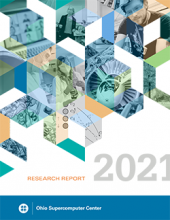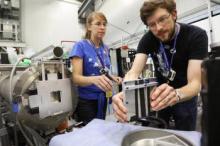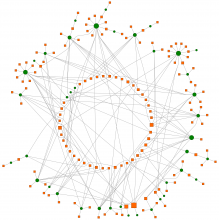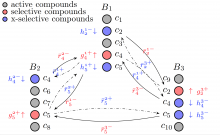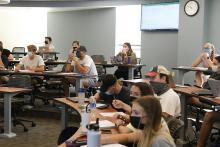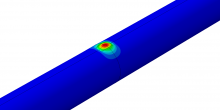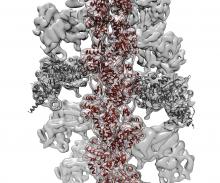We are proud to present the 2020-21 Ohio Supercomputer Center Research Report. Download the report in PDF format or browse the articles on the web.
2021 Research Report
Scientists know that plants emit chemicals into the soil to communicate information to other plants. These chemical messages, sent through fungal networks, may warn plants to defend against threats in their environment or to stop encroaching on another plant’s space.
With a focus on plant and pollinator species, Colin Campbell, associate professor of physics at the University of Mount Union, studies how these groups interact with one another. Some interactions are mutualistic, where both species benefit, but other interactions are only beneficial for one species.
Xia Ning has a large portfolio of research projects at The Ohio State University that focus on understanding how artificial intelligence can be used to solve issues in health care.
Discovering new drugs to treat disease is one of Ning’s goals. Traditional research methods, which call for lengthy trials with animal models, have disadvantages.
TotalSim US, a computational fluid dynamics (CFD) consulting and solutions firm based in Dublin, Ohio, is helping the state of California certify fuel efficient and environmentally friendly tractor-trailers using resources provided by the Ohio Supercomputer Center (OSC).
Although many college students have access to a personal computer for their studies, it can be challenging for them to learn about how modern, complex computing systems are used in the science, engineering and technology fields without working with the systems directly.
Across the United States, 2.6 million miles of pipeline transports goods such as petroleum and natural gas, according to the U.S. Department of Transportation. This critical infrastructure is regularly threatened by ground movements, landslides, mining operations and corrosion.
After Krishna Chinthalapudi joined The Ohio State University College of Medicine as an assistant professor, the college notified him that he could make use of the computational power of the Ohio Supercomputer Center (OSC) for his research program.
Rendering models is a key part of the modern architectural design process. Brendan Ho, a professor in the College of Architecture and Environmental Design at Kent State University, helps students analyze the spaces they live and work in. Rendering has been an essential component in his studio Encapsulated Episodes, co-taught with Director Ivan Bernal.
Luiz Oliveira teaches the foundations of chemistry to undergraduate students at Mount Vernon Nazarene University. By participating in Oliveira’s research, which draws on the resources of the Ohio Supercomputer Center (OSC), students gain experience equivalent to completing an extra course in computational chemistry.
